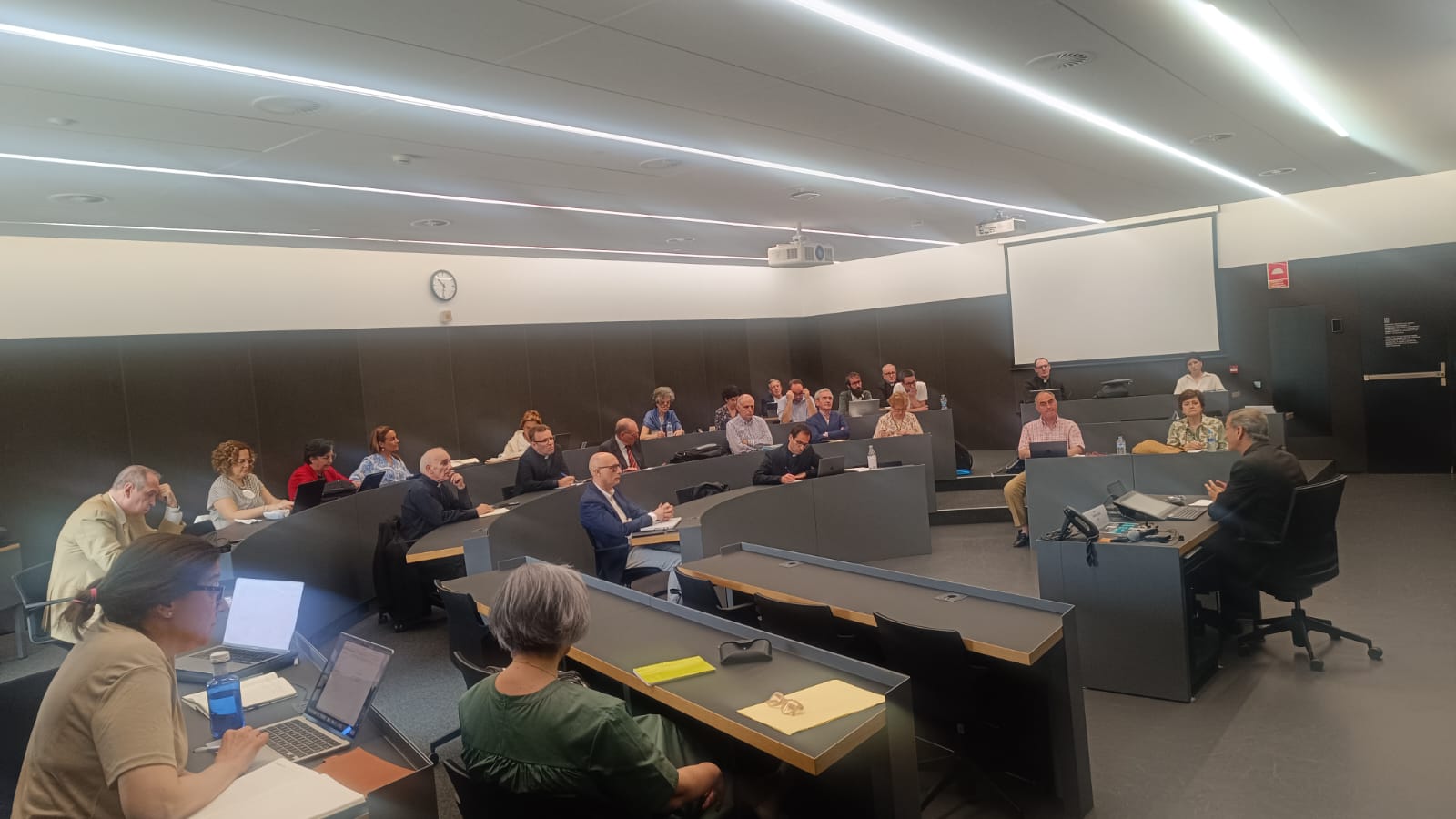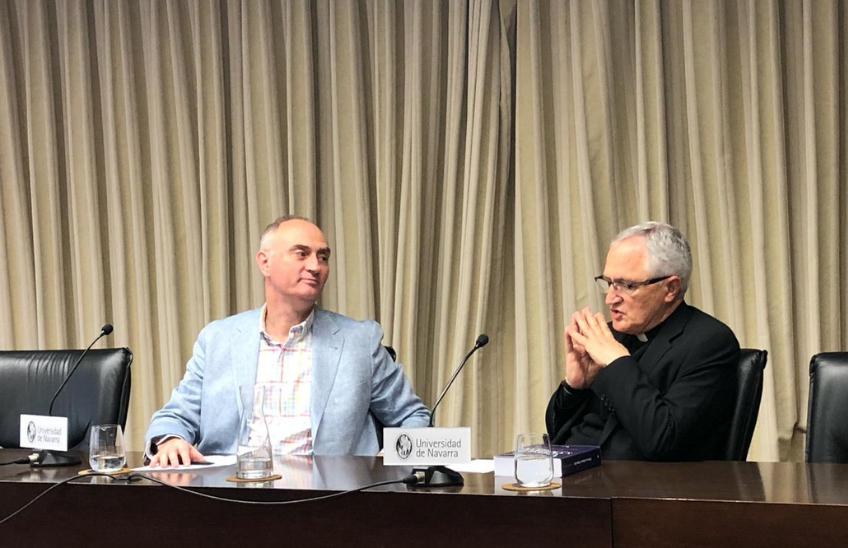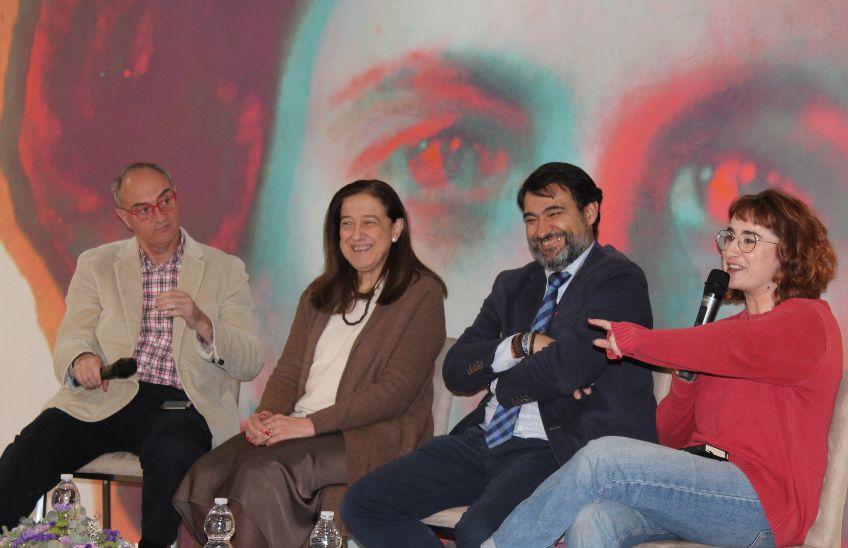Mexican Women and Their Contribution to the Expansion of Opus Dei
Mercedes Montero presents some aspects of development of the work of Opus Dei women in Mexico during the early 1950s. In the interview the researcher highlights the role of Guadalupe Ortiz de Landázuri and a handful of women who contributed to consolidate the Work in that country and helped other nations of the continent in the beginnings of Opus Dei.
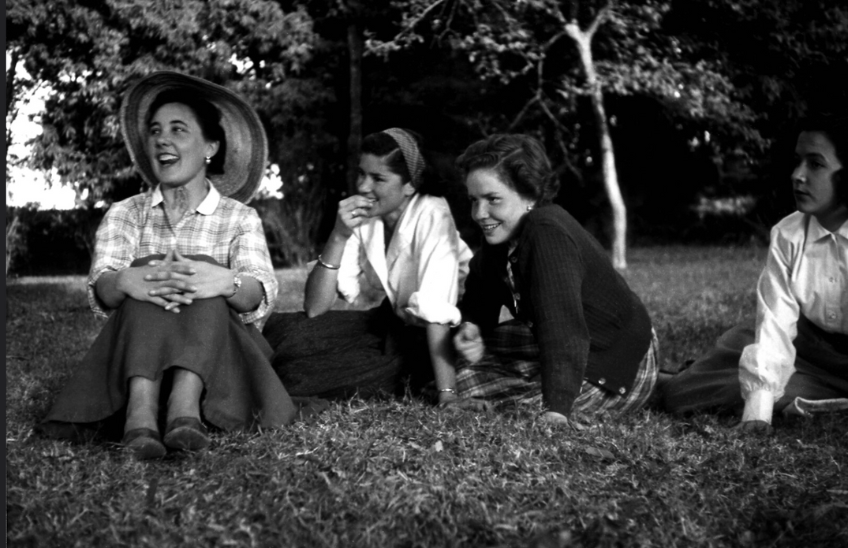
26 | 05 | 2023
The Center at programs of study Josemaría Escrivá interviewed researcher Mercedes Montero about her recent work published in the latest issue of the journal Studia et Documenta. In her article, Montero explains how Mexican women helped in the process of Opus Dei's expansion throughout the American continent between 1951 and 1956. Her analysis reveals the influence of these women in the development of the Work and their contribution in the propagation of the Work in the region.
Mercedes Montero is a professor at School of Communication at the University of Navarra and an associate researcher at CEJE. Her programs of study reconstructs central aspects of the apostolic work carried out by women of Opus Dei in Spain and Mexico.
What situations contributed to Opus Dei's arrival in Mexico?
The founder of Opus Dei first sent the priest Pedro Casciaro together with two young men to explore the possibilities of starting the Work in America. After that trip, it was decided to send small groups to the United States and Mexico.
The first women of Opus Dei to leave Spain to begin the Work in Mexico were Guadalupe Ortiz de Landázuri, who was then in her thirties, and two young women who had been in the Work for only a short time: María Ester Ciancas and Manolita Ortiz. They were the first women of the Work who left Spain to begin the task of evangelization in another continent.
Pedro Casciaro, who had arrived a little earlier, knew quite a few Mexican couples, ladies and families, so when these three Spaniards arrived, many people were already waiting for them. They immediately felt surrounded by a lot of affection and people who were interested in Opus Dei.
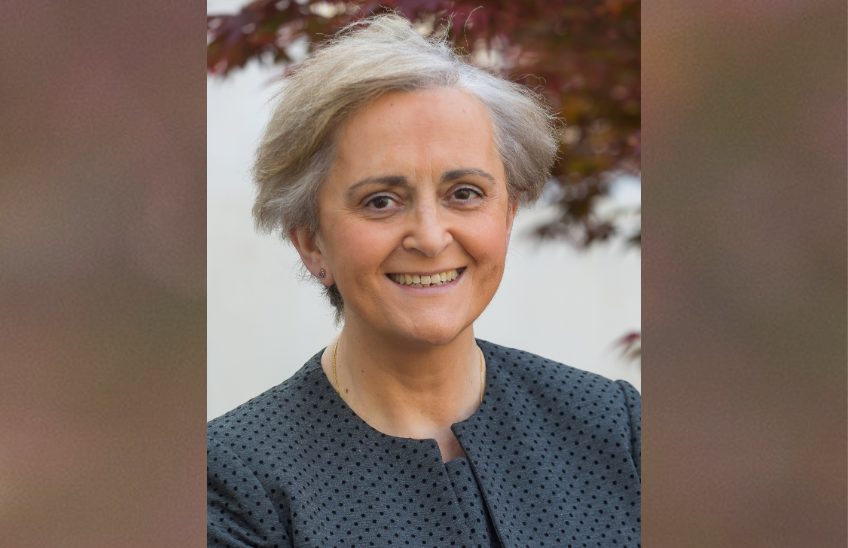
Mercedes Montero, CEJE researcher and professor at the University of Navarra.
Why was Opus Dei's message well received by Mexican women?
Mexico is a Catholic country. It is true that there was an anticlerical revolution at the beginning of the 20th century, but many people lived the faith. In this context, we can see that from the beginning the message of sanctification in the midst of the world was very well received by men and women of different social conditions.
When those first women of the Work arrived in Mexico, they had several objectives. One was to promote women in various social spheres. To this end, they set up university residences, launched the high school Montefalco and many other initiatives.
In this Mexican social context, how were these social and educational projects perceived?
The initiatives had both critics and supporters. In some testimonies we read that there were people who openly criticized these young women for trying to build a project educational and a retreat house in Montefalco, a place that at that time was totally abandoned, without water, electricity or anything else. It was the nest of all the animals in the area. However, these women took it upon themselves to clean up a piece of that land and a section of the building that was still standing. They conditioned the place as best they could, leaving it as dignified as possible and with scarce resources they began the first activities. Of course, just as there were people who criticized or made fun of them, there were also many others who were amazed and enthusiastic about Montefalco's project .
Other initiatives, on the other hand, were better received from the outset. For example, the two university residences for girls, one located in Mexico City and the other in Monterrey. Also the high school Chapultepec, which was set up in the state of Sinaloa. This project started first with a day care center and, a few years later, they formed a high school with a female and a male part. Very soon the institution had the reputation of being the best high school in the state, with first class teachers graduated from the university.
At final, women with certain spiritual concerns, who were pious and had great devotion to Our Lady, began to join all these initiatives. Many of them asked for Admissions Office to join Opus Dei, and in a few years there were numerous vocations in Mexico. According to what I have read in the diaries of the centers and in the letters, many girls and ladies were attracted by the message of sanctification, the possibility of having Christian and theological training , and of cultivating their piety.
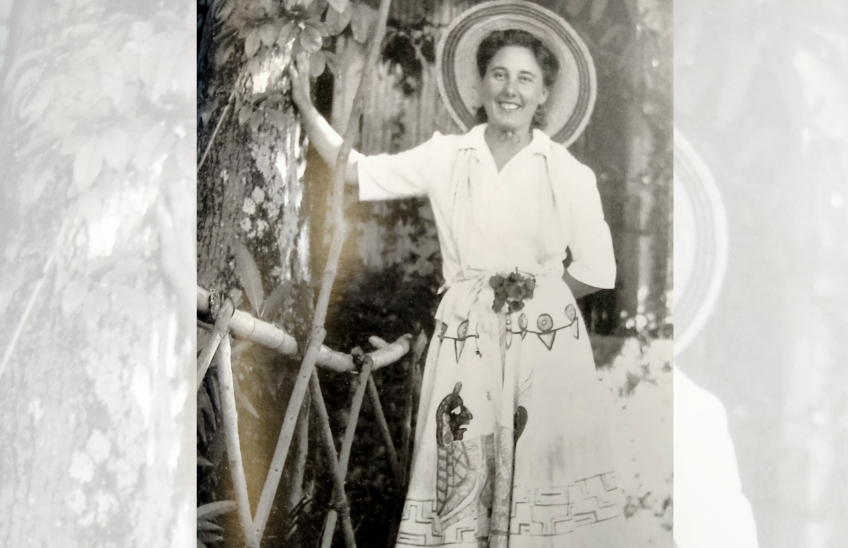
Guadalupe Ortiz de Landázuri during her years in Mexico.
How were Guadalupe Ortiz de Landázuri's years in Mexico?
She lived in Mexico from 1950 to 1956. During those years the apostolic work grew a lot. Guadalupe was a very nice person, unconventional, authentic, simple and strong. In my opinion, she had what the Founder always said: a unity of life. With her actions and words she managed to transmit a lot of enthusiasm.
Among her greatest concerns was the training of all the women who requested the Admissions Office to Opus Dei. In consonance with what the founder transmitted to them, she was convinced that it was necessary for all of them to receive training in human and Christian virtues as well as a solid theological training in order to be able to be formators of other women.
This concern was reflected, among other things, in the purpose of sending young Mexican women to study in Rome. There, in 1953, St. Josemaría had founded the high school Romano de Santa Maria, an international programs of study center that has received hundreds of women from all over the world over the decades. Of course, there was never enough money to cover all the needs of apostolic activities. However, Guadalupe, with that specific character of hers, did the impossible to raise the money and send small groups of Mexican women to Rome.
To what extent did Mexico collaborate with the expansion of Opus Dei that took place during those years?
In the mid-twentieth century, Opus Dei expanded significantly throughout different countries. In America between 1950 and 1956, in addition to beginning work in Mexico and the United States, it began in Argentina, Chile, Colombia, Venezuela, Guatemala, Peru, Ecuador and Uruguay. In general, small groups of two or three Spanish women were organized, who traveled together as much as possible and settled in the new destination.
From what I have seen in Guadalupe's correspondence, each one of those girls who was going to start a new country in that immense continent wrote to her immediately. In those letters they told her things, asked her for advice but also asked her for financial aid to carry out the work.
For example, Narcisa Gonzalez Guzman (Nisa), came to the United States to start Opus Dei, and from there maintained a close correspondence with Guadalupe. Faced with the rapid growth of the work in Mexico, compared to the United States, Nisa asked Guadalupe financial aid, that some young Mexican women go to that country. The curious thing was that while in the United States there was a lack of vocations to attend to the work, there was no lack of economic means. This was partly because the women who came to the activities organized by the Work carried out a lot of social action, so they helped to obtain enough material means. On the other hand, in the neighboring country the status was different: there were many vocations but the material and economic means were lacking. So, based on the letters, it can be said that there was a mutual financial aid between the two countries: many times resources (money and clothes) were sent from the United States, while some Mexican women traveled to collaborate in apostolic activities.
Mexico also supported and helped other countries of the American continent in the early days of Opus Dei's work. In fact, some Mexican numeraries traveled to Chile, Colombia, Venezuela, Argentina, Peru and Guatemala.
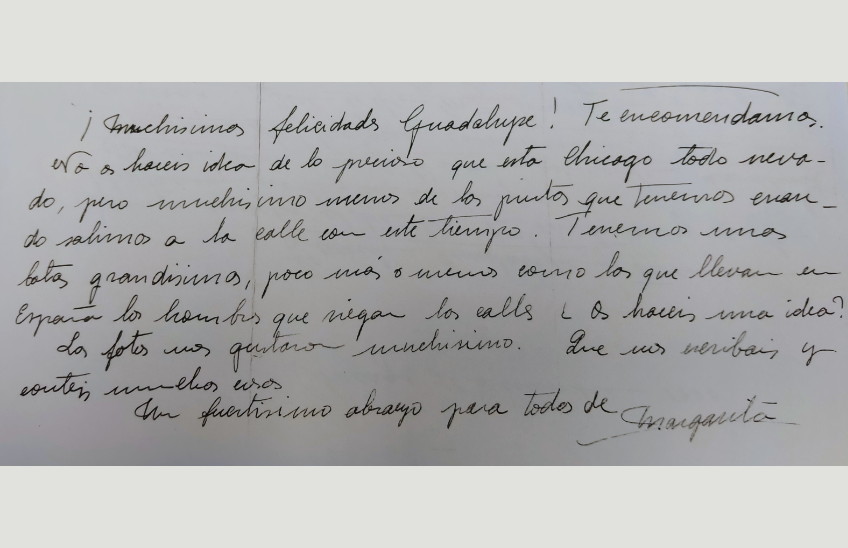
Letter from Margarita Barturen to Guadalupe Ortiz de Landázuri (Chicago, 1954).
How did the Founder support or encourage the Spanish women who moved to Mexico to start the Work?
Guadalupe's correspondence is preserved in the archives, and there is a constant flow of letters between her and advisory service Central. In these letters, Guadalupe would transmit details of the work in Mexico: projects, vocations and difficulties. The advisory service always responded with a recommendation, but they also often proposed plans and goals to the Mexicans, and sometimes even asked that a numerary move to another country.
Guadalupe also maintained a fluid correspondence with the founder. In these letters we can see a great transparency, she told him absolutely everything. From the projects they had in hand, to the steps and unforeseen events that arose, to things of their interior life. Everything is reflected in these letters, to which the founder responded with advice and words of encouragement.

